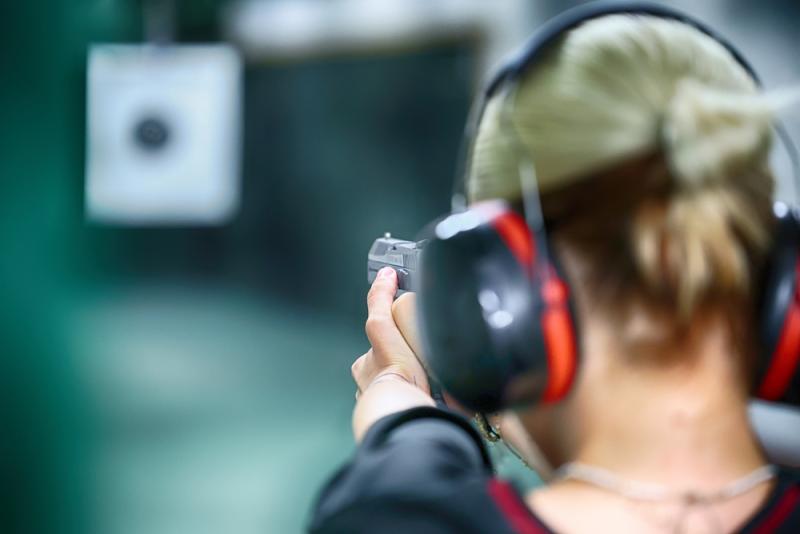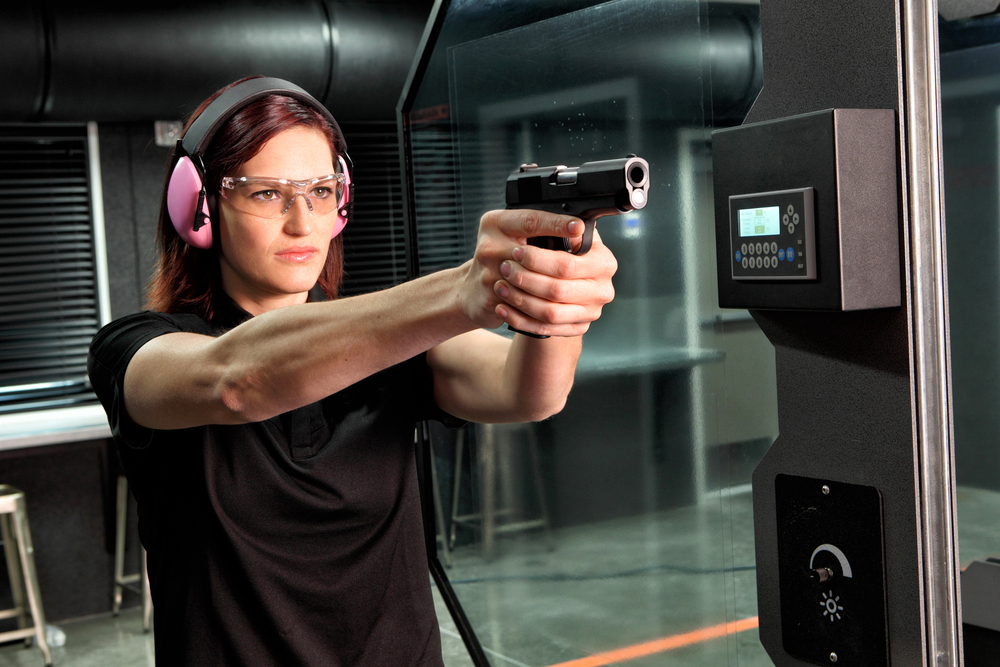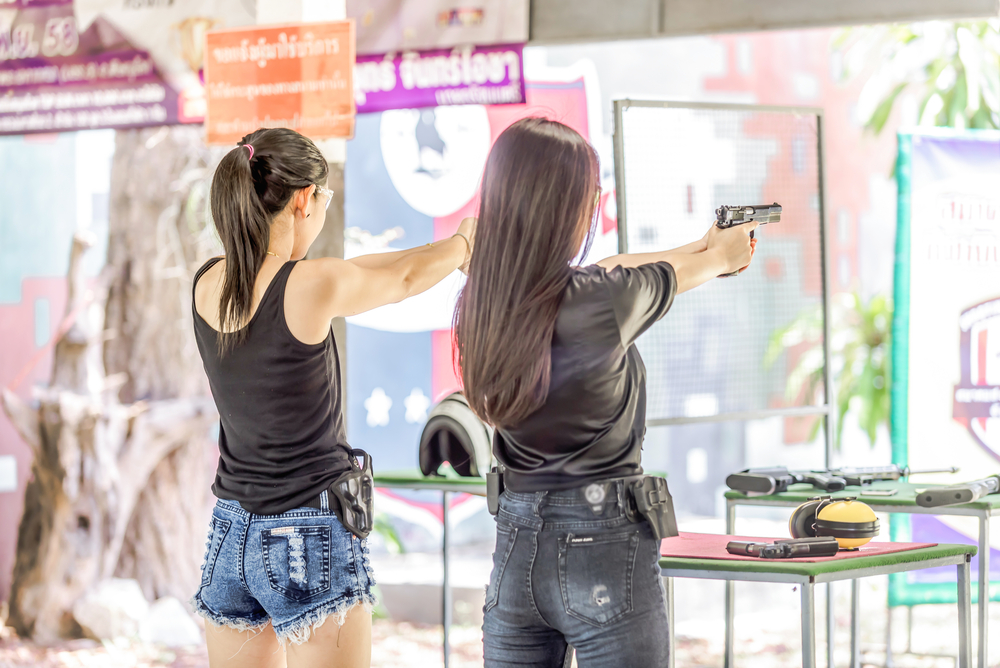Boosting Your Accuracy as a Shooter: Techniques and Tips for Hitting the Mark

Accuracy is the cornerstone of skilled shooting, whether you're perfecting your aim at the local range or preparing for a hunting trip in the Australian outback. While some might have a natural flair for hitting the target, accuracy is a skill that can be developed with the right techniques, practice, and a little patience. Whether you're new to shooting or an experienced marksman looking to improve your precision, here are some proven tips and strategies to help you hit your target every time.

1. Get the Basics Right: Stance and Grip
Your shooting stance and grip are the foundation for accuracy. If your base isn't stable, it's going to be much harder to shoot accurately, especially over long distances or during rapid-fire sessions.
Stance: A good shooting stance involves standing with your feet shoulder-width apart. Your dominant foot should be positioned slightly behind the other, allowing you to maintain balance and absorb recoil effectively. This solid foundation is crucial, particularly for rifles and shotguns, which produce more recoil than handguns.
Grip: How you hold your firearm plays a key role in your accuracy. Your grip should be firm but not so tight that it creates tension in your hands and arms. For handguns, a two-handed grip is essential, with your dominant hand controlling the trigger and your support hand wrapped firmly around the grip. With rifles and shotguns, ensure that your hands are well-placed to control the firearm while also supporting its weight comfortably.
Practice Tip:
Consider starting with dry fire practice—pulling the trigger without live ammunition. This allows you to perfect your stance and grip without worrying about recoil, noise, or ammo costs.
2. Perfect Your Sight Alignment and Sight Picture
Many shooters assume that simply aiming at the target is enough, but real accuracy comes from understanding sight alignment and sight picture.
Sight Alignment: Sight alignment refers to the proper positioning of your firearm’s sights. For most iron sights, this means ensuring that the front sight is centred between the rear sight posts with equal spacing on each side, and that the tops of both the front and rear sights are level. Misalignment can lead to missed shots, even if the target appears to be in your crosshairs.
Sight Picture: Once your sights are aligned, you need to ensure your sight picture is correct. This refers to how the sights line up with the target. Your front sight should be clear and in focus, while the target itself may appear slightly blurred. This ensures that you’re focusing on the alignment of your firearm, not the distant target.
Practice Tip:
Spend time aiming at shooting targets without firing, focusing solely on your sight alignment and sight picture. Vary the distances of the targets to challenge your skills and improve your accuracy at different ranges.
3. Master Your Breathing
It might seem insignificant, but your breathing can dramatically affect your shooting accuracy. The rise and fall of your chest as you inhale and exhale can cause small movements in your body that shift your aim.
- Controlled Breathing: To minimise this movement, shooters are encouraged to time their shots with their breathing. The ideal time to pull the trigger is during the natural pause after you exhale but before you inhale again. This pause allows your body to be as still as possible, creating a steadier shot.
Practice Tip:
Before each shot, focus on slowing down your breathing. Practising breathing exercises, both on and off the range, can help you develop more control over your breathing and, in turn, improve your shooting accuracy.

4. Trigger Control is Key
Even with a perfect stance, grip, and sight alignment, poor trigger control can throw off your shot. Many shooters make the mistake of jerking the trigger, which disrupts the alignment of the sights and moves the gun just enough to miss the target.
Squeeze, Don’t Pull: The key to good trigger control is to apply smooth, consistent pressure on the trigger. Instead of "pulling" the trigger, think of it as a gentle "squeeze" that breaks the shot without disturbing your aim.
Trigger Placement: Place the pad of your index finger on the trigger, rather than the joint. This provides more control and precision over your trigger squeeze.
Follow-Through: Just like in golf or tennis, follow-through is important in shooting. After you’ve pulled the trigger, maintain your grip and focus. Don’t immediately release the trigger or lower your firearm. Good follow-through ensures that you stay on target for follow-up shots.
Practice Tip:
Use dry firing exercises to develop smooth, consistent trigger control. Without live ammo, you can focus entirely on your trigger mechanics and eliminate any tendency to jerk the trigger.
5. Understand and Adapt to Your Gun’s Recoil
Recoil is an inevitable part of shooting, especially with higher-calibre firearms. However, anticipating and managing recoil is essential for maintaining accuracy, particularly when shooting in rapid succession.
Recoil Management: To control recoil, maintain a solid stance and grip. Your stance should be strong enough to absorb the force of the recoil, and your grip should be firm without being too tight. With practice, you’ll learn how to manage recoil naturally, allowing for quicker recovery between shots.
Follow-Up Shots: After absorbing recoil, get back on target quickly for follow-up shots. This requires maintaining focus and staying in position, rather than flinching or anticipating the recoil, which can disrupt your aim.
Practice Tip:
Spend time practising rapid-fire drills with a focus on maintaining accuracy. Start slow and gradually increase your speed as you become more comfortable with managing recoil.
6. Consistent Range Practice
No matter how many tips and techniques you read, the most important element of improving accuracy is practice. Consistent, regular practice at the shooting range is essential for developing muscle memory and honing your skills.
Vary Your Distances: Don’t limit yourself to shooting at the same distance every time. Mix things up by practising at short, medium, and long-range targets. This will help you adjust to different shooting conditions and distances.
Different Conditions: Shoot in a variety of conditions, including different lighting, wind, and weather situations. Being comfortable with different environments will make you a more adaptable shooter.
Use Different Firearms: If possible, practice with different types of firearms. This will help improve your overall shooting ability and give you a better understanding of how various guns handle.
Practice Tip:
Set goals for each range session, whether it’s improving groupings at a particular distance or reducing your reaction time between follow-up shots. Keep track of your progress over time to stay motivated.
7. Invest in Quality Equipment and Gear
Your gear can make a big difference in your shooting accuracy. Using high-quality ammunition, a well-maintained firearm, and the right accessories can help you stay on target.
Optics and Sights: If you’re struggling with accuracy, consider upgrading your firearm’s sights or adding optics. Scopes and red dot sights can improve your accuracy by providing a clearer, more precise view of your target.
Firearm Maintenance: A clean, well-maintained firearm is crucial for accuracy. Regularly cleaning your gun, especially the barrel, ensures that your firearm is functioning optimally and can improve the consistency of your shots.
Practice Tip:
Make it a habit to clean your gun after every shooting session. A well-maintained firearm not only shoots more accurately but also lasts longer and is safer to use.
8. Get Professional Coaching
Even experienced shooters can benefit from professional coaching. A shooting instructor can provide personalised feedback, help correct bad habits, and teach advanced techniques that can take your accuracy to the next level.
- One-on-One Training: Personalised coaching allows an instructor to observe your technique and identify areas where you can improve. Sometimes, small adjustments to your grip or stance can make a big difference in your accuracy.
Practice Tip:
If you're struggling with a specific area of your shooting, consider booking a lesson with a qualified shooting instructor. A few sessions could dramatically improve your accuracy and overall shooting confidence.

Conclusion
Improving your shooting accuracy takes dedication, practice, and a commitment to mastering the fundamentals. By focusing on your stance, grip, breathing, trigger control, and managing recoil, you’ll develop the skills needed to hit your target consistently. Remember, regular range time and professional coaching can make all the difference in your journey to becoming a more accurate shooter.
Disclaimer: Ensure your firearm is properly stored and secured when not in use. Regular maintenance and consulting with professionals for safety checks are essential for optimal firearm performance and safety.